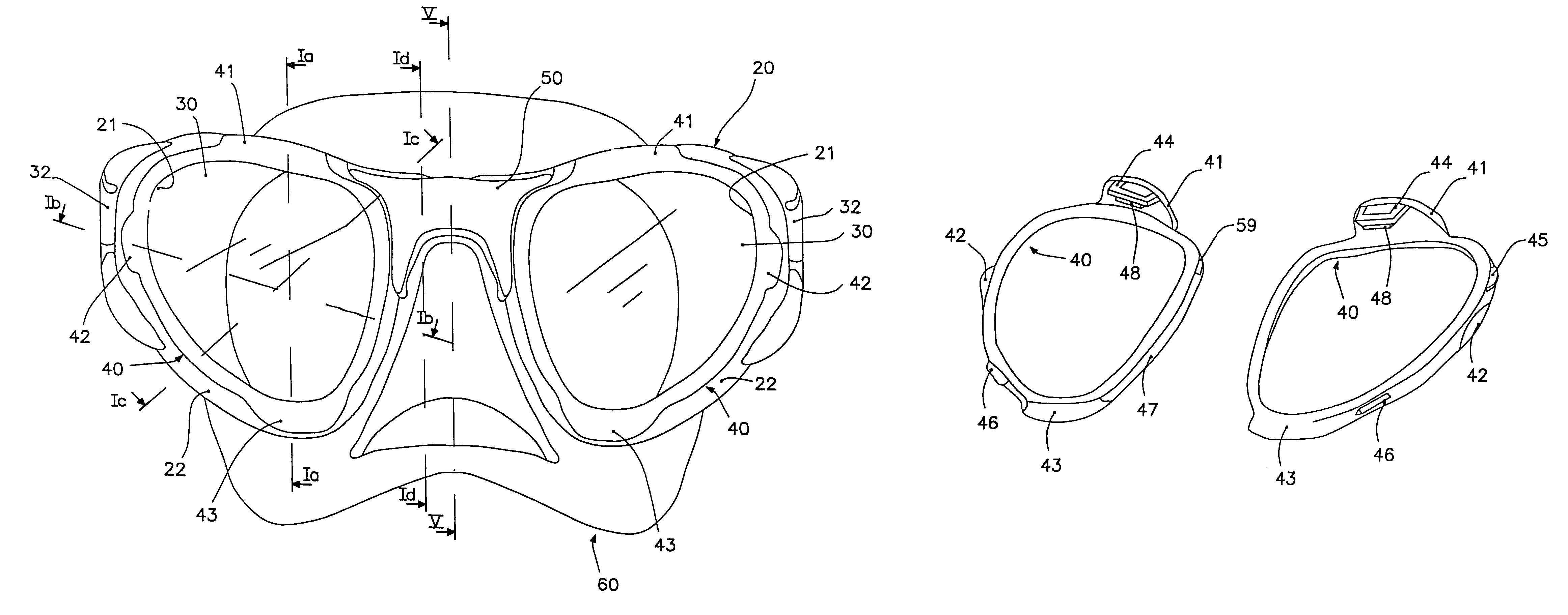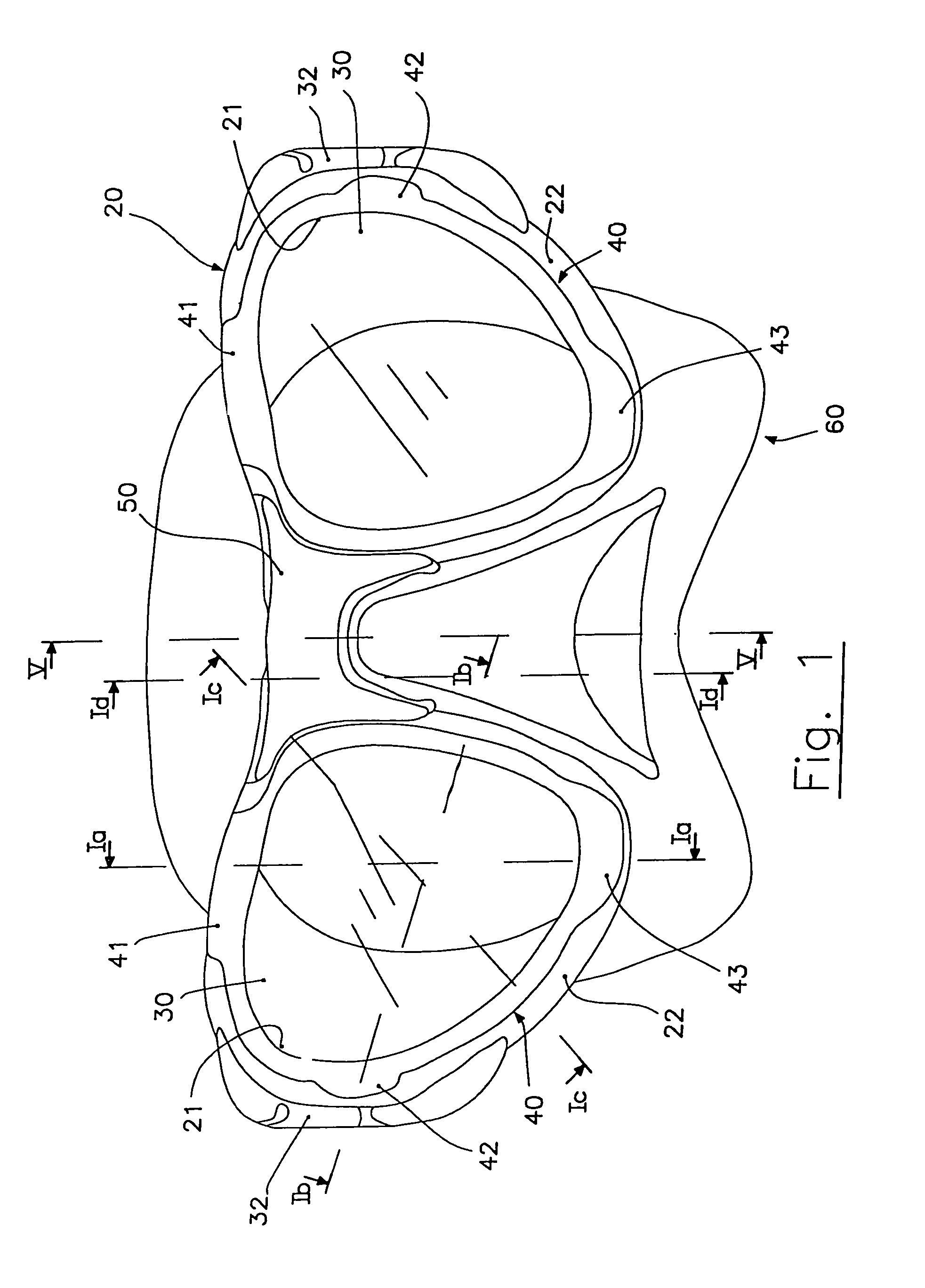Scuba diving mask with corrective lenses
a technology of corrective lenses and masks, applied in the field of aquatic activities, can solve the problems of significant risk of mask damage, loss of mask watertightness, and significant risk of lens or frame damage, and achieve the effects of eliminating any risk of damage to mask frames, lenses or skirts, and easy replacemen
- Summary
- Abstract
- Description
- Claims
- Application Information
AI Technical Summary
Benefits of technology
Problems solved by technology
Method used
Image
Examples
Embodiment Construction
[0022]Referring now to the drawings and, more particularly, to FIGS. 1-7, there is shown generally a specific, illustrative mask with corrective lenses, according to various aspects of the present invention. In one embodiment, illustrated generally in FIG. 1, the mask comprises a frame 20 having a plurality of generally symmetrical rings 22, e.g., two, surrounding a corresponding number, e.g., two, of relatively symmetrical openings 21. The rings desirably have a substantially L-shaped cross-section and comprise an internal flange 23 and an internal cylindrical surface 24 for positioning a lens 30 that, after insertion of a lip 61 of a skirt 60, is locked against the internal flange by a collar 40, shown in detail in FIGS. 3-4. Preferably, two brackets 32 extend laterally from rings 22. A strap is adjustably attached to the brackets in a conventional manner such as using buckles (not shown).
[0023]According to one aspect of the present invention, in order to properly position each co...
PUM
 Login to View More
Login to View More Abstract
Description
Claims
Application Information
 Login to View More
Login to View More - R&D
- Intellectual Property
- Life Sciences
- Materials
- Tech Scout
- Unparalleled Data Quality
- Higher Quality Content
- 60% Fewer Hallucinations
Browse by: Latest US Patents, China's latest patents, Technical Efficacy Thesaurus, Application Domain, Technology Topic, Popular Technical Reports.
© 2025 PatSnap. All rights reserved.Legal|Privacy policy|Modern Slavery Act Transparency Statement|Sitemap|About US| Contact US: help@patsnap.com



